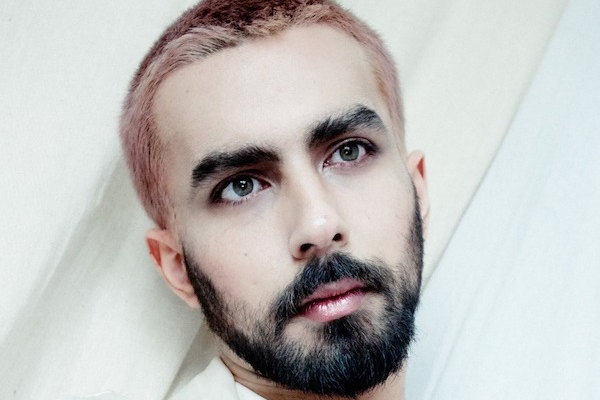
Ricardo Reveron Blanco, learning & engagement co-ordinator at Photoworks, talks about the Archiving Your Life project by Brighton-based LGBTQ+ youth group Queer History Now, and part of the Photoworks Festival running until October 25.
What was the inspiration for the title of the festival, Propositions for Alternative Narratives?
The theme Propositions for Alternative Narratives attempts to give space to different ways of thinking about photography. Ideas which could be seen as an alternative to the mainstream narratives which so often dominate conventional photographic debate.

What prompted the collaboration between Photoworks and Queer Heritage South?
In 2010 Juliette Buss (Photoworks), David Sheppeard (Marlborough Productions), Mark Bryant and then Lesley Wood (New Writing South) began an archiving and exhibition project called Queer in Brighton, supported by National Lottery Heritage Fund. The partnership was born of a shared impulse to celebrate and promote the rich cultural life of the LGBTQ+ community in Brighton & Hove, which has since grown into an independent heritage learning organisation called Queer Heritage South, initiating projects across the city and beyond.
We’re thrilled to still be collaborating after 10 years. It’s been a rich dialogue that’s challenged and evolved the way we all work. For the past two years, we’ve been supporting young LGBTQ+ people to become heritage leaders through creativity and discussion. The LGBTQ+ programme at Photoworks has been documented in the Into The Outside website, Queer History Now is the current group we’re working with. This group has brought together young people with different interests and backgrounds who have developed a shared ethos for encountering, producing and challenging queer history.

Why did Queer History Now choose the Tommy & Betty archive?
Queer History Now took interest in the Tommy & Betty archive (partly on show at Queer the Pier, Brighton Museum & Art Galleries) as it documented the lives of two women whose everyday livelihood served as a catalyst for discussion. These included conversations about revisioning history through a queer/ordinary/ethical lens.
The first photo of Tommy & Betty together is c.1947, suggesting they knew each other for more than 50 years. Their collection of personal memorabilia was found in a house clearance in Worthing in 2017. It includes a lifetime of photo albums. Many photos, including one marching by the Palace Pier on Remembrance Day, depict the women in uniform. They served in the Sussex Royal Battalion Women’s Royal Army Corps (WRAC). Their collection is a testimony for ordinary lives being part of history, ensuring that the everyday is as valuable as the extraordinary lives of those talked about in Museums. We can relate to Tommy and Betty as they document their everyday activities with friends.
We thank Queer the Pier and the Brighton museum for letting us use the archive. The Queer the Pier exhibition at Brighton Museum and Art Gallery reopens on October 17, 2020, where albums and ephemera from the Tommy & Betty Collection are on display.

What sort of responses did members of the group have to the collection?
The group built a visual language using a broad range of creative processes including collage, mixed media, digital tools and needlework, expressing creatively how queer histories resonate with a present queer experience. Themes covered during the virtual workshops and in the work produced included; friendship, place, the lives of objects, ethics of documentation, memory.
A quote from one of the Queer History members about the work they submitted for the Photoworks Festival reads as follows:
“Resist the linear! Our history is an endless sticky cobweb! We fill in the gaps ourselves! We stitch ourselves into their past(s)! You change the story every time you tell it! No matter how tightly we weave it, it will never quite match up! I never met Tommie, or Betty! My own memories will someday escape me! Lavender essential oil may help you sleep!”
What form does the queer manifesto take, who is it aimed at and what are its motives?
As part of the group’s outcomes, Queer History Now were invited to create a manifesto about the way they’ve worked during this project, their ambitions of how they want archives to be used and shared, and what they hope to see in the sector in the coming years with regards to talking, sharing and learning about our histories. This manifesto is part of the Photoworks Festival In A Box and is aimed at anyone interested in how archives could and should be used to talk about history. This manifesto isn’t static, and the group is eager to keep adapting and evolving this document in order to keep learning and assessing how the sector and archives operate around the world while things change over time. Their manifesto is a work-in-progress, a live document, that communicates the principles, passion and excitement of this group and will propel queer heritage into the future.

What elements from Queer Heritage South are included in the Festival in a Box?
The main thing included is a copy of the manifesto designed by Phoebe Wingrove. This gives you a real flavour of what the group is dedicated to fostering with regards to queer heritage and archiving. The document found on the Festival in a Box and recorded on the Photoworks Festival website testifies to the way of working the collective is keen on promoting in the sector and beyond when we talk about our histories.
There is also a chance to Archive Your Life with Queer History Now x Queer Crafts event on October 20. For more info, CLICK HERE















You must be logged in to post a comment.